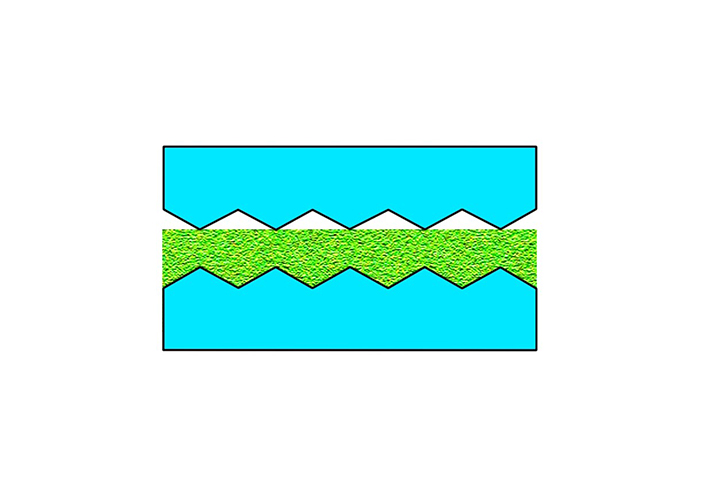Formed-In-Place Foamed Gasket (FIPFG)
Here, too, a compressible seal is applied to a component in the form of a bead. After vulcanization, the foam seal adheres to the substrate. Installation can take place after vulcanization. The seal is again achieved by partial compression.
Materials: Silicone and PU foams
Procedure:
- Restriction to addition-curing RTV-2 and PU foams
- Components A and B are processed in the dynamic mixer and are usually loaded with gas
- The mixture is applied in flowable or solid form to the parts to be sealed using a robot or coordinate table
- The material foams up on the parts (about 2 to 4 times its volume)
- Reaction slightly exothermic at room temperature
- Depending on the system, fully vulcanized in minutes to hours
- Heat dissipation or heat supply (ambient temperature, heating during mixing, temperature and thermal conductivity of the substrate) influence reaction rate and foam structure
- Sealing must be carried out in groove for flowable systems
Advantages:
- seal compressible
- Low closing forces
- Closed-cell foam
- High tolerances with large dimensional fluctuations
- Automatic application
Disadvantages:
- Not suitable for sealing liquid media such as oils, coolants
- High machine expenditure
- Processing conditions must be adjusted specifically to applications
Possible uses:
- headlight housing
- taillight housing
- intake pipe, intake duct
- ignition cable covers
- housings of various types
- packaging industry
Synonyms: Freely applied silicone or PU foam sealant,Freely applied sealant, Wet installation , Freely applied sealant, Dry installation

Contact

